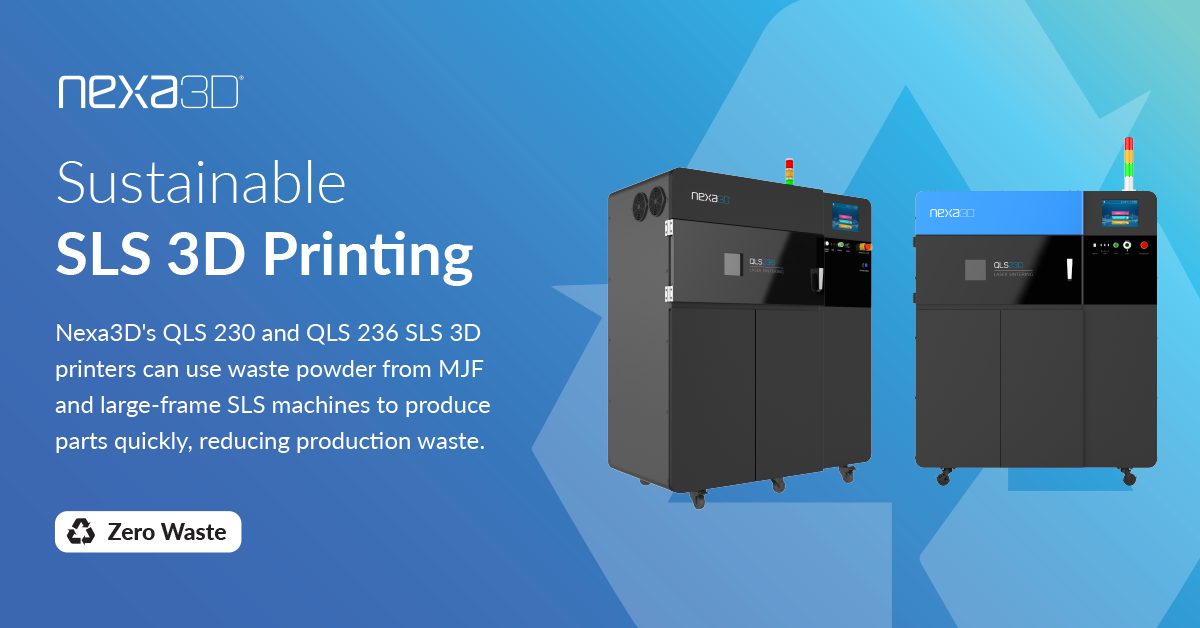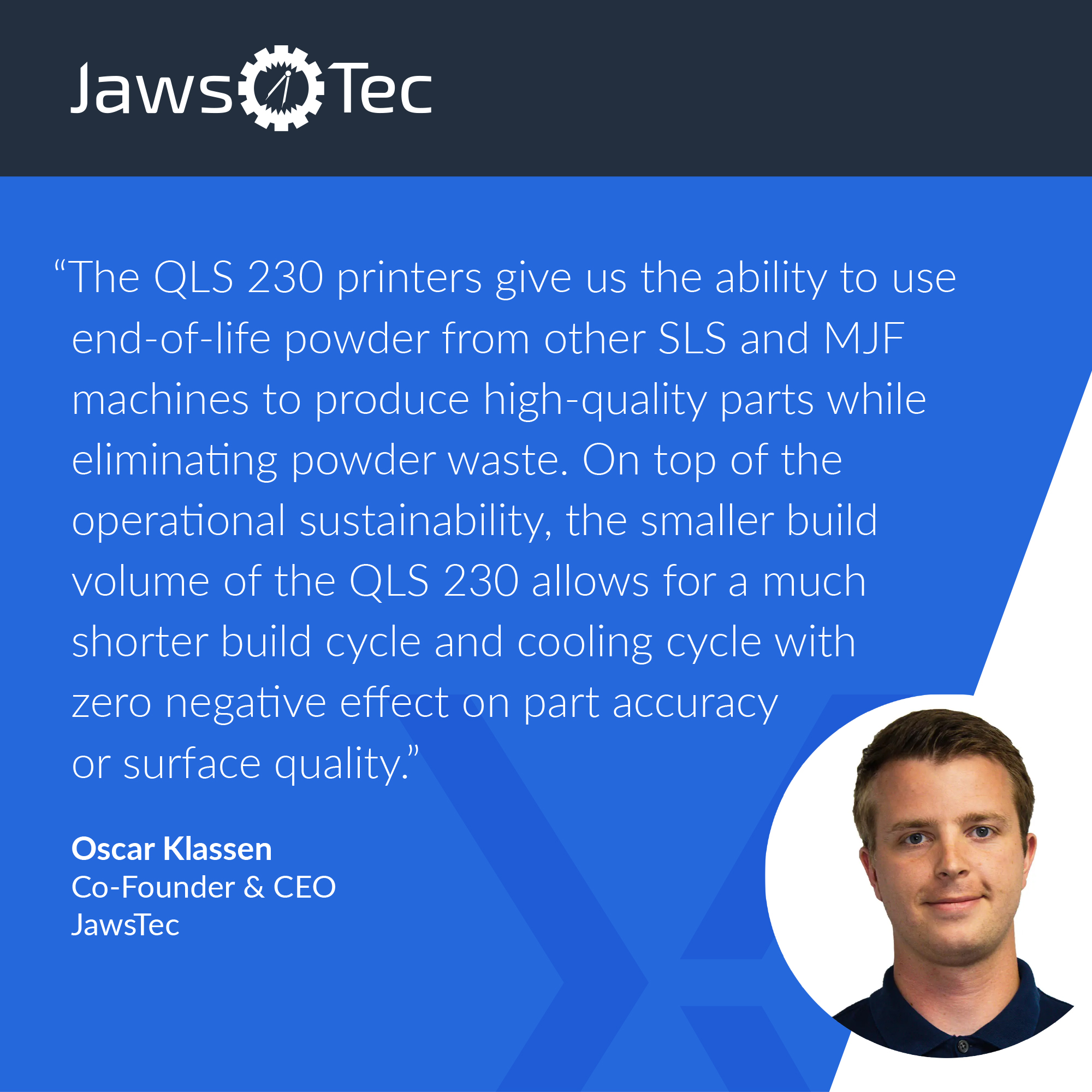Additive manufacturing with SLS has significant environmental benefits over traditional manufacturing methods. The technology uses less material and energy to produce parts, reducing the carbon footprint. However, the sustainability of additive manufacturing goes beyond its ecological impact. It’s also about designing parts more efficiently and minimizing waste. In SLS additive manufacturing, we can customize our designs for better performance, durability, and functionality, which reduces the need for replacements, repairs, and, ultimately, waste.
Sustainability creates a circular economy where materials are recycled, and waste is eliminated or reduced. With SLS additive manufacturing, we can utilize bio-derived powders like PA11 or PK-5000 from the start and fully use the recycled bio-derived powders for a zero-waste solution. For example, the QLS 230 and QLS 236 open platform SLS 3D printers both print with recycled powders that would otherwise be thrown out as waste. When investing in powder-based 3D printing equipment it is critical to consider the required virgin powder rates – especially on closed platform systems as powder wastage could be a significant problem for both the environment and the bottom line.
JawsTec, a manufacturing service provider specializing in 3D printing and powder bed fusion technologies recently invested in four QLS 230 SLS 3D printers to preserve and re-use over 2 tons of powder wastage from other closed SLS 3D printing platforms each year. By doing so they not only eliminated powder wastage but also increased revenue by producing additional parts made with recycled powders. This is a great example of deploying equipment that not only minimizes waste but also creates additional value.

In addition to using recycled powders in SLS 3D printing, there is the potential to reduce transportation emissions. With the ability to produce parts on demand, we can significantly reduce the need for inventory and transportation. Instead, parts can be printed locally and assembled where needed, reducing the supply chain’s carbon footprint.
Engineering collaboration with others, including supply chain partners, suppliers, and customers, is needed to promote sustainability. It’s essential to have a dialogue and work together to identify areas of improvement and promote best practices. By doing this, we can accelerate the adoption of sustainable practices and achieve a more sustainable manufacturing industry.
Finally, we should prioritize sustainability throughout the product’s life cycle. From design to disposal, sustainability should be considered at every stage. Engineers need to develop products with circularity and recyclability in mind. We have the potential to make a significant difference in promoting sustainability in additive manufacturing. Collaborating with others and promoting best practices can also accelerate the adoption of sustainable practices, leading to a more sustainable manufacturing industry. Let us strive towards a world where technology, innovation, and ecology go hand in hand.
Learn more about Nexa3D’s Zero Waste SLS 3D printing solutions.
